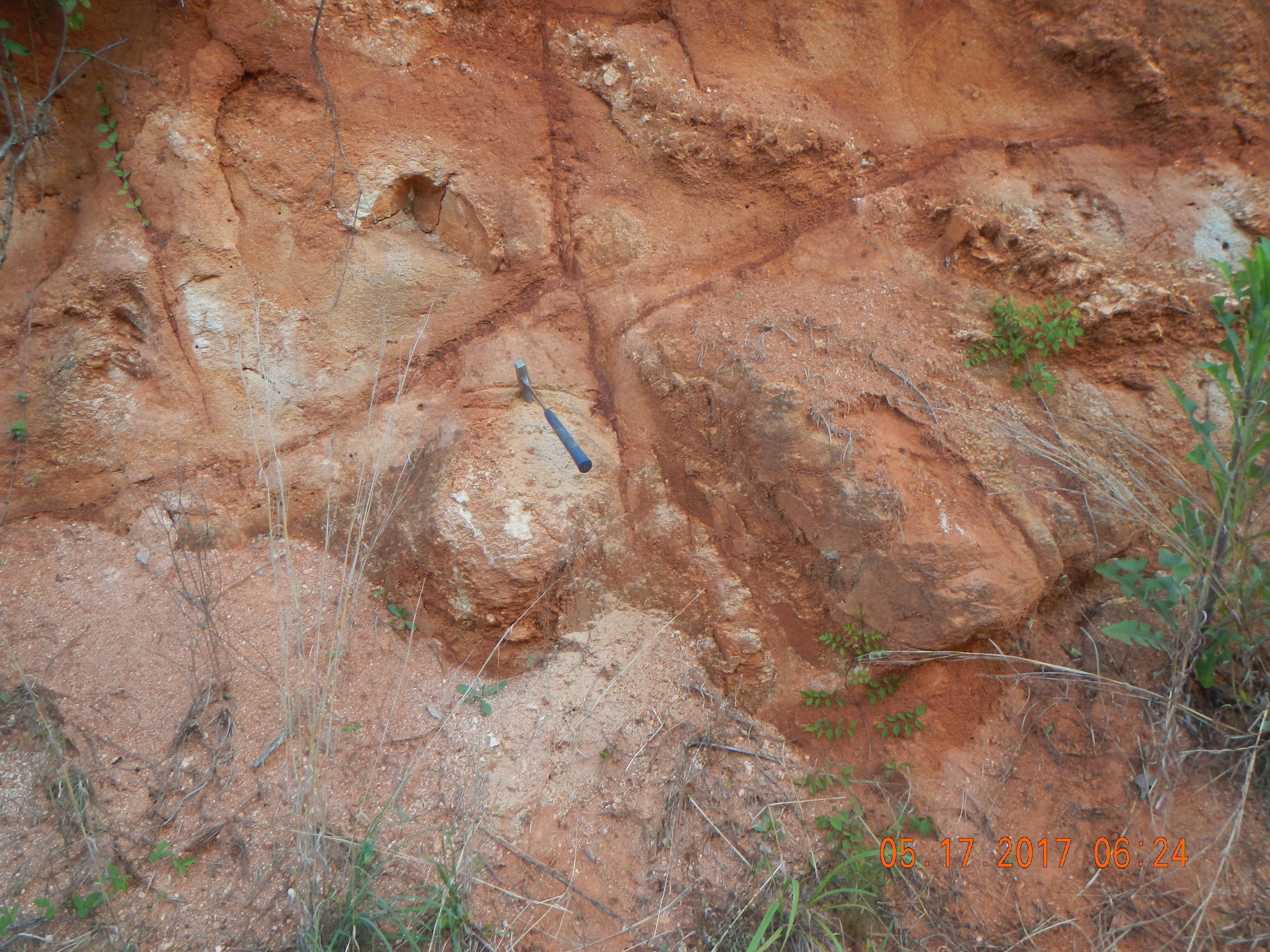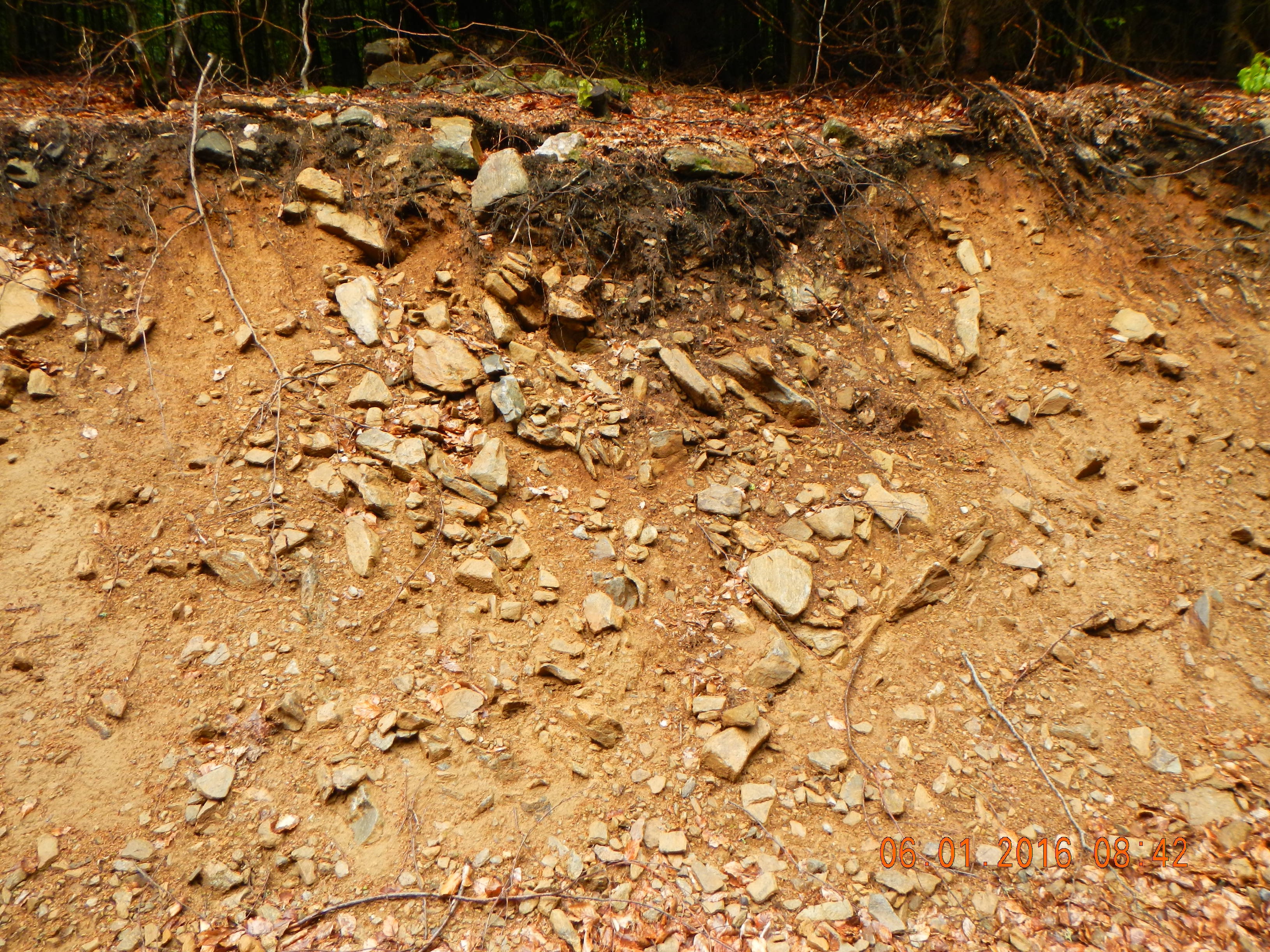In studies of soil formation and landscape evolution, we often think in terms of a (over-) simplified "conveyor belt" model, where bedrock is weathered to create the raw material for soil formation at the base. Further up toward the ground surface, this weathered rock is progressively modified into soil. Thus, as you go from the base of the soil or weathering profile, material gets progressively more modified, and (in terms of soil rather than rock), older.
Anyone who's spent time in more than a few soil pits or road cuts knows that the conveyor belt is, at best, a loose approximation and often hardly applicable at all. Variations in properties of the rock or parent material, dynamical instabilities and positive feedbacks in weathering and other pedogenetic processes work in many cases to create increasingly variable and heterogeneous (both vertically and horizontally) regoliths over time. Critical processes operate in all directions (not just vertically), and moisture fluxes and biological activity follow preferential, self-reinforcing paths. Further, mass is added not just from weathering, but from deposition and organic matter, and removed by erosion, leaching, fire, and decomposition.

Weathering profile in Union County, South Carolina, formed in granitoid rocks. At the top, mostly out of view, is an Ultisol. At and next to the rock hammer are minimally weathered granite corestones. The lines are highly weathered veins from the rock, where preferential water flow and root penetration are concentrated. Within the area of the photo are intact rock, weathered rock (saprolite), near-final weathering products (iron and aluminum oxides and kaolinites) and everything in between. The solid bedrock weathering front is >10 m below the section pictured.
In fact, the mechanical metaphor I prefer is not a conveyor belt, but (to borrow a phrase from James Taylor's "Streamroller Blues"), a Churning Urn of Burning Funk. If you want to stick with a conveyor belt analog, you should realized that in a given landscape there are actually multiple conveyor belts, operating at different rates, moving in different directions, and some of them re leaky or prone to breakdown.

Conveyor Belt? I think not (Sumava Mountains, Czech Republic).
Some previous published thoughts on these issues are here, here, and here.
